| Home | Nature Weekly Index |
17 January 2016 | Tropical Swallowtail Moth | Lyssa zampa |
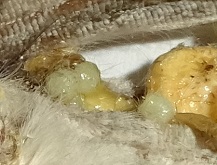
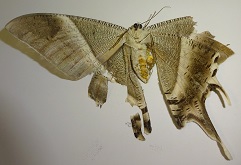
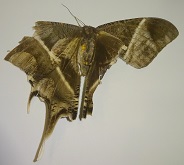 While walking home from the train station on the usual path on Monday morning, I saw a dead
Tropical Swallowtail Moth (Lyssa zampa) on the
concrete floor. It was around 6:15 am and the sky was still quite dark. Based on the squashed carcass, someone had probably when it
stopped to explore the ground. The carcass was still fresh, meaning that the accident had likely taken place within the last few
hours. I brought its incomplete remains home to take some pictures since my camera was not with me. After examining the enlarged
pictures, I found some some yellow rounded objects close to the punctured abdomen region that looked like eggs.
While walking home from the train station on the usual path on Monday morning, I saw a dead
Tropical Swallowtail Moth (Lyssa zampa) on the
concrete floor. It was around 6:15 am and the sky was still quite dark. Based on the squashed carcass, someone had probably when it
stopped to explore the ground. The carcass was still fresh, meaning that the accident had likely taken place within the last few
hours. I brought its incomplete remains home to take some pictures since my camera was not with me. After examining the enlarged
pictures, I found some some yellow rounded objects close to the punctured abdomen region that looked like eggs.
Despite that it was a dead specimen, I was quite excited as I had not seen this moth for more than a year now. The last population boom in Singapore was between April and July 2014, where almost everyone had a chance to view a live specimen close to their home or workplace and every media here had reported on its sudden and unusual appearance.
Its host plant, Endospermum diadenum (Bulan-bulan Tree) was one of the trees that stand tall by the side of the Tree Top Walk bridge. I had been looking at this tree each time I cross the bridge. Coincidently, In my recent trip in December, I finally got to know how this tree look like from the ground level. There was this tall tree along the trail that I had passed by several time without realizing that it was a Bulan-bulan Tree. I could only get a glimpse of the back of the leaves high up on the tree. During the trip, I thought of taking some pictures on the tree’s canopy from below, its tree trunk and fallen leaves, thinking that it might be a tree that I had not seen previously. It was after examining pictures of the fallen leaves closely and those I saw on the bridge that eventually made the connection.


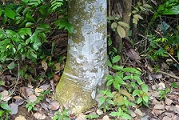
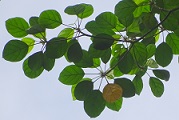
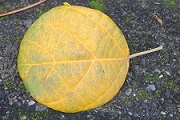
I tried checking up new information on this moth in Singapore after the 2014 frenzy but nothing new turn up. It was as if that the moth had went into a long hibernation. After seeing the moth carcass, I tried to look out for it when I walked the on same path in the last few days but there was no sign of the moth.
This moth had been sighted as far as Taiwan back in 1985 [1]. Though there was a paragraph discussing the host plants in the article, it did not indicate the possible host plant in Taiwan. Another specimen was recorded in Japan in 2006 but was thought to be transported from the Philippines by typhoon [2]. A more recent report was from Vietnam [3].
References:
[1] Heppner JB, Wang HY. Lyssa Zampa in Taiwan (Lepidoptera: Uraniidae). Tropical Lepidoptera 1996;7(2):146. | Read article |
[2] Mutsunori T, Makoto Y. New record of the tropical swallowtail moth Lyssa zampa (Butler) (Lepidoptera: Uraniidae) from mainland Japan. Entomological Science 2007;10(1):103-106.
[3] Sourakov A. The tropical swallowtail moth, Lyssa zampa (Uraniidae) -- another victim of lymph-thirsty parasites in Vietnam. News of the Lepidopterists' Society 2013;55(3):106-107. | Read article |